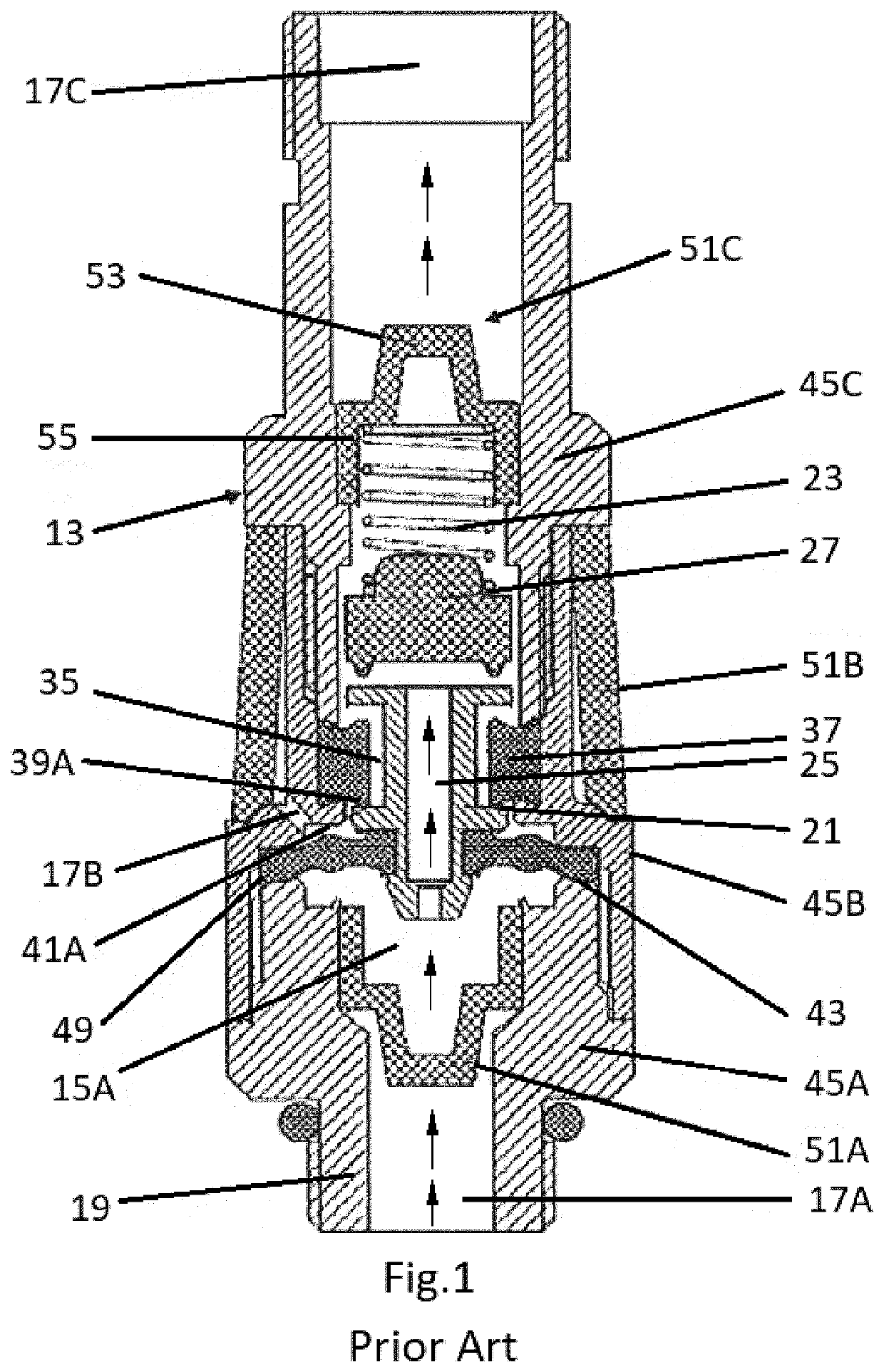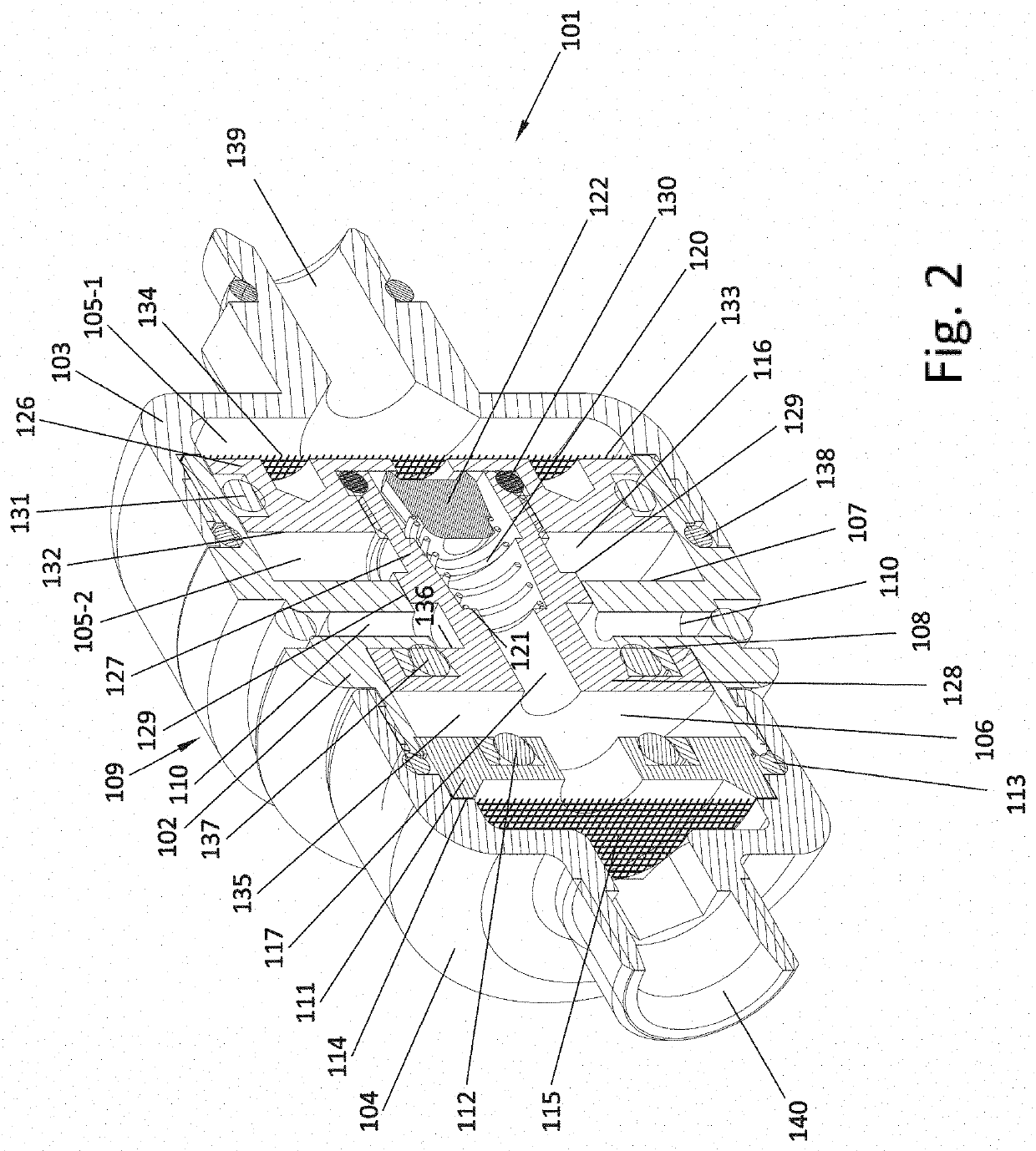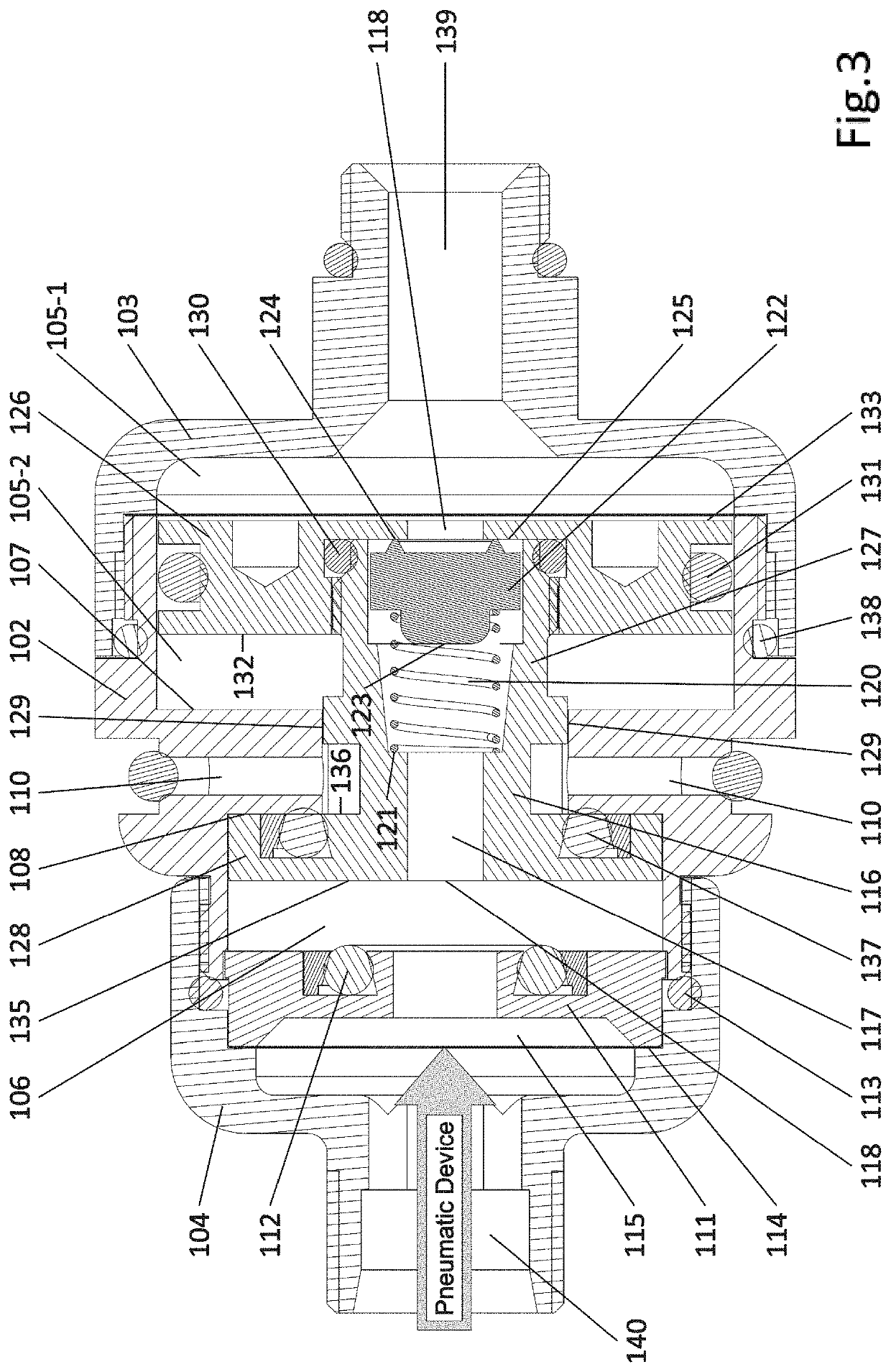Automatic pressure valve for inflation / deflation of a pneumatic arrangement
a pneumatic arrangement and automatic technology, applied in the direction of mechanical equipment, transportation and packaging, valve types, etc., can solve the problems of safety problems or immobilization of vehicles, maintenance of tyre pressure in vehicles, and pressure loss, and achieve the effect of reducing pressure differences
- Summary
- Abstract
- Description
- Claims
- Application Information
AI Technical Summary
Benefits of technology
Problems solved by technology
Method used
Image
Examples
example 1
[0024]Start-up. Initial conditions: Pneumatic tyre pressure: 100 psi; state of the automatic valves of this invention 101: “Blockage”; pressure in the feeding network of each shaft: 0 psi. Calibration pressure of the equipment 201: 100 psi.
[0025]The driver gets into the truck and starts the engine to begin the journey, for example, to a construction site. To such effect, the equipment 201 is active and waiting for the pressure generated by the vehicle compressor (inlet pressure) to be proper to begin working. The automatic valves 101 arranged in each pneumatic tyre are at the moment in a retention status since there is not air pressure in the feeding network of each shaft.
[0026]A reading panel 202 (FIG. 6) has a lit LED which indicates that the equipment is in a high-pressure status (HIGH). The reading panel also shows that the pressures present in each shaft 203 and the inlet pressure that fees equipment 201. For example: Shaft 1: 100 psi. Shaft 2: 100 psi. Shaft 3: 100 psi. Inlet ...
example 2
[0029]Load to a given value of the tyre of the above-mentioned example. Initial conditions: Tyre pressure: 100 psi. Automatic valve status: retention under equal pressure. Pressure in the feeding network of each shaft: 100 psi. Calibration pressure of the equipment 201: 30 psi. It is the pressure the tyres will reach at the end of this status.
[0030]Initially, the reading and tyre pressure control panel 202 (FIG. 6) shows the following status: the pressures of each shaft 203 is of 100 PSI. The LED is lit which indicates that the equipment is at a high-pressure status (HIGH). Valves 101 are in a retention status under equal pressure of the network and the tyre. When pressing on a key H / L, a shift in the equipment status from high to low pressure happens and the LED turns on. In order that deflation is caused, it is necessary that the valves shift to a blockage status. To such an effect, a depressurization module 204 activates so that the pressure in the network of each shaft falls dow...
example 3
[0035]Tyre inflation. Initial conditions: Tyre pressure: 30 psi. Valve estate IRD: retention under equal pressure. Pressure in the feeding network of each shaft: 30 psi. Calibration pressure of the equipment 201: 100 psi. This is the pressure the tyres will reach at the end of this status.
[0036]Initially, the panel (FIG. 6) shows the following status: the pressures of each shaft 203 is of 30 PSI. The LED is lit which indicates that the equipment is at low pressure (LOW). The valves 101 are in a retention status under equal pressure of the network and the tyre. When the key H / L is pressed, the status shift of the equipment happens from low to high pressure. It is at this moment when the LED turns on and the equipment 201 starts inflating the tyres from 30 PSI to 100 PSI.
[0037]According to FIG. 5, the valves are in an inflation status. When pressurized air is supplied at a desired pressure in the inlet path 139, said desired pressure being greater than the calibration pressure of the ...
PUM
 Login to View More
Login to View More Abstract
Description
Claims
Application Information
 Login to View More
Login to View More - R&D
- Intellectual Property
- Life Sciences
- Materials
- Tech Scout
- Unparalleled Data Quality
- Higher Quality Content
- 60% Fewer Hallucinations
Browse by: Latest US Patents, China's latest patents, Technical Efficacy Thesaurus, Application Domain, Technology Topic, Popular Technical Reports.
© 2025 PatSnap. All rights reserved.Legal|Privacy policy|Modern Slavery Act Transparency Statement|Sitemap|About US| Contact US: help@patsnap.com



